A couple weeks ago, it was announced that Travis Pastrana would jump an Indian Scout FTR750 into the record books, not once, but in three separate leaps designed to pay homage to the late great Evel Knievel. You can read all about the details here, but in short, Travis will attempt three of Evel’s most famed jumps aboard the FTR, including jumping the length of 52+ crushed cars, 16 Greyhound busses, and the famous Caesar’s Palace fountain jump that left Knievel with over 40 broken bones and in a month-long coma.
Travis Pastrana Will Pay Tribute to Evel Knievel by Jumping an Indian Scout FTR750
Travis, our modern era’s most iconic motorcycle stunt performer, with countless world records to his credit, is no stranger to laying it all on the line. But this time, he’s not jumping his dirtbike, and there’s a whole new set of parameters to get accustomed to. And that’s not to mention a completely foreign bike to get comfortable on before sending it hurdling through the air high above the Vegas strip.
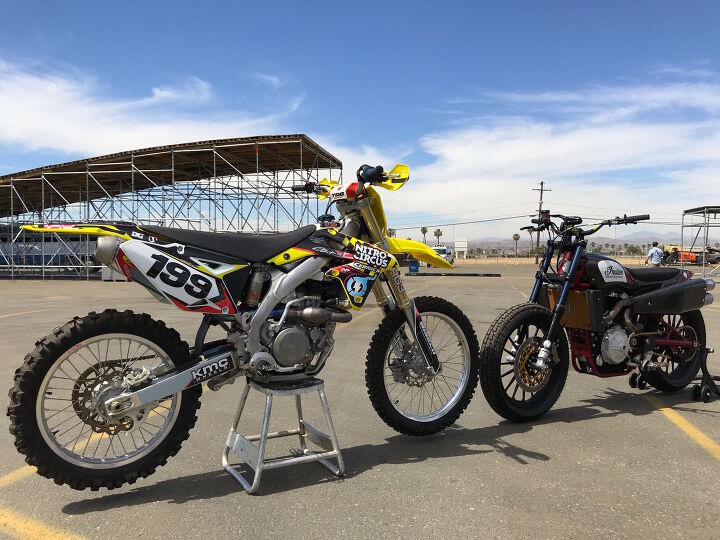
We were invited to meet Travis and his Nitro Circus crew, as well as to check out the FTR750 he’ll be jumping at a facility built to replicate the three jumps he’ll attempt live on July 8th, in Las Vegas. You probably wouldn’t expect Pastrana to attempt jumps of this magnitude on a bike designed to keep both wheels firmly planted on the ground, but then again, that just wouldn’t be his style…
One might think that the FTR would have to be heavily modified to be able to handle these additional forces – we did – but that’s just simply not the case. Roland Sands and his team are in charge of getting the bike set up to Pastrana’s liking, and you’d be surprised how little they’ve changed it. For starters – of course – the suspension’s internals were revalved and sprung stiffer by Race Tech using stock components to accommodate the increased force of each landing, but the front fork and rear Öhlins shock only have the original 4.5 inches of travel to work with (compared to the 12 inches of travel Travis is used to on his dirtbikes).
To further brace and reinforce the front end, Roland installed a beefed up triple tree setup that Indian’s American Flat Track Wrecking Crew uses for the TT-style races. Mounted to the top clamp is a pair of taller risers which have been reversed to place Travis’ signature ProTaper handlebar further forward, with ergonomics more similar to a dirtbike rather than the typical pullback and low bend on a flat tracker. Additionally, they installed a Brembo front brake setup because Travis’ landings don’t have a lot of run out, and require him to get on the binders as soon as he touches down.
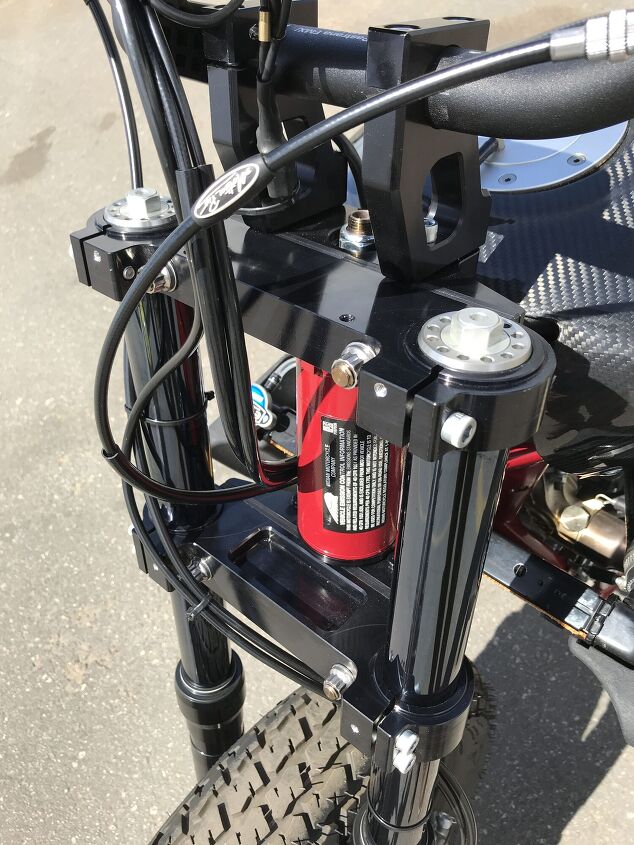
Finally, the FTR750’s footpegs had to be repositioned. In stock trim, the FTR750’s pegs are actually offset from one another, to better weight and balance the bike while sliding and turning left. So, custom mounting plates had to be made in order to align the pegs for a sturdier and more familiar feel. A taller, grippier seat was installed as well to help accommodate Travis’ 6-foot-2 frame, but other than that, the FTR is as stock as it gets – a true nod to how solid the Indian platform comes right out of the box, regardless of what its intended use will be. Though, Indian never designed it with this in mind, that’s for sure.
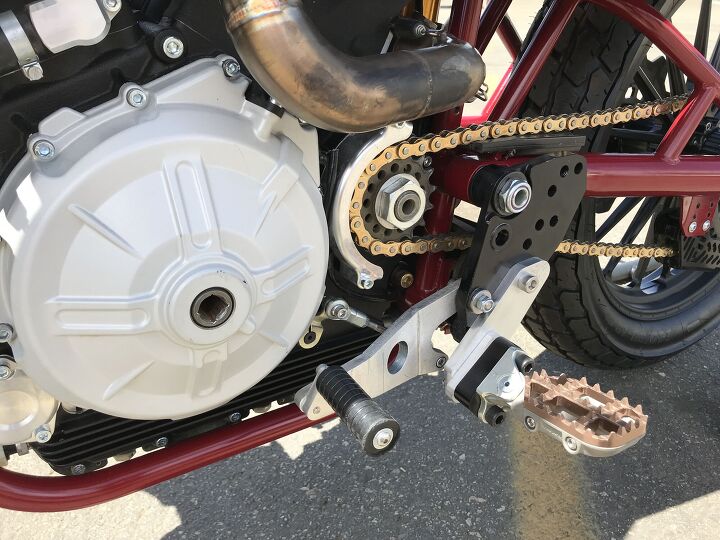
Prior to chatting with Travis yesterday, he had only ridden the bike once, and will only have a few days to get comfortable on it this week before attempting the three jumps on live television July 8th. We keep saying attempting, but we imagine these jumps should be a walk in the park for Travis considering he’s double-backflipped bikes before, but he’s not so sure…
“I’m riding a bike that I’m not familiar with, jumping at three different speeds, and possibly in three different gears. The bike is going to fly differently off of every lip and elevation, and land differently on each landing. But our goal, just like Evel’s, is to go as big as humanly possible and push the limits of whatever machinery you’re on. It’s a tribute to Evel Knievel and we are redoing his stunts, but at the same time, we want to live with Evel’s spirit, and that is to go big.”
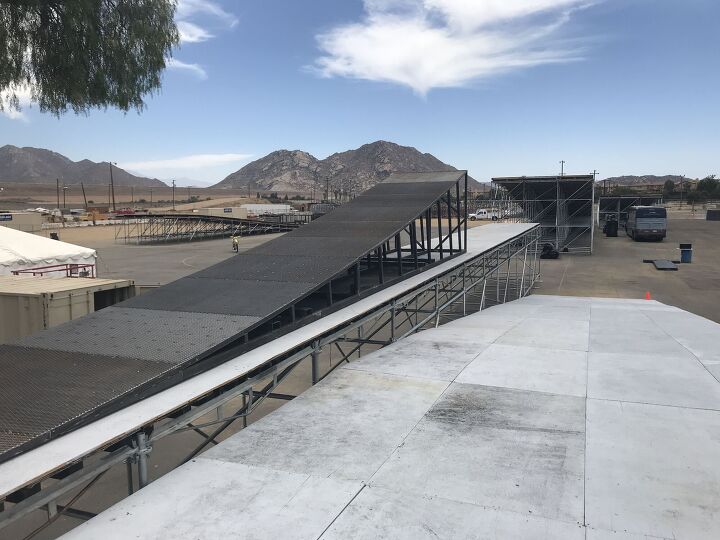
A 180-foot jump is big, no matter how you cut it. Period. It doesn’t matter what type of vehicle is flying through the air, and with less than a week’s worth of preparation a whole month’s time ahead of the actual event, Travis doesn’t have a whole lot of preparation to really get things dialed in. And when asked what type of physics planning was involved, he said, “Not a whole lot. We have our general idea of what to expect, but despite how advanced technology has become, computers more often than not just can’t seem to get the math right. So we don’t rely on them. And then there’s the added variables of wind, temperature and humidity to contend with, which not only affect me, but the bike as well. So we just have to go out there and feel it through the seat of our pants, because there’s no telling what the bike is going to do once we’re airborne.”
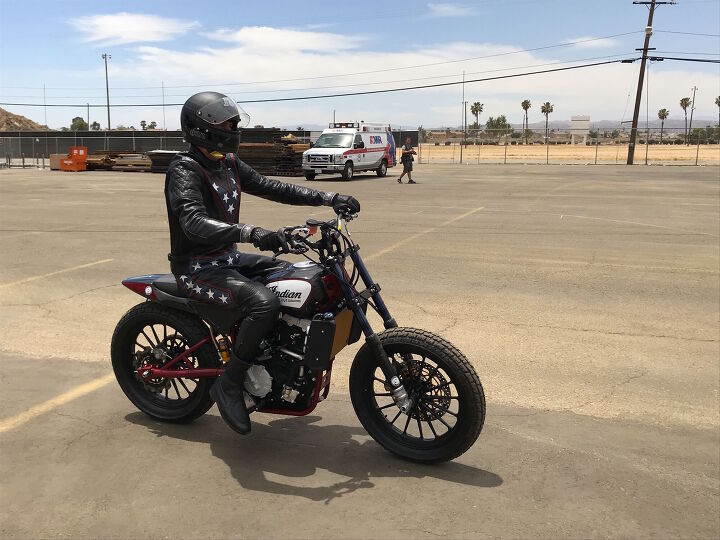
With the technology and equipment Evel had available to him 50 years ago, and what Travis is working with today, you’d think it’d be safe to say these jumps should be a piece of cake. But let’s not forget, this is motorsports we’re talking about here, where anything and everything can happen in the blink of an eye. They wouldn’t be called daredevils if they weren’t flirting with well, you know…
Can Travis leave his mark on American motorcycle history as one of our most iconic daredevils alongside Evel Knievel? Tune-in to the History Channel on Sunday, July 8th at 8PM ET/ 5PM PT to find out!
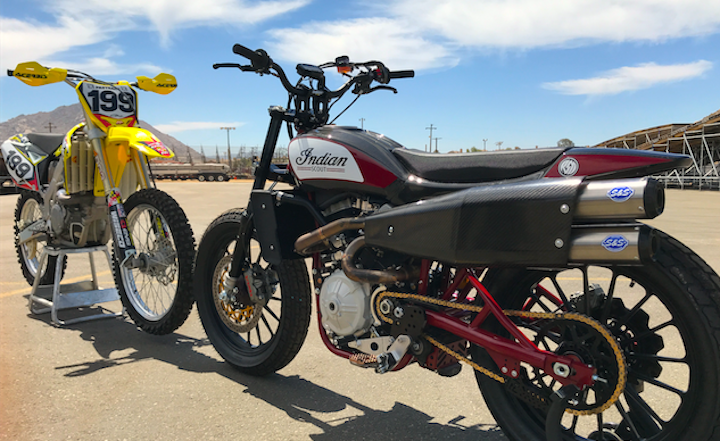
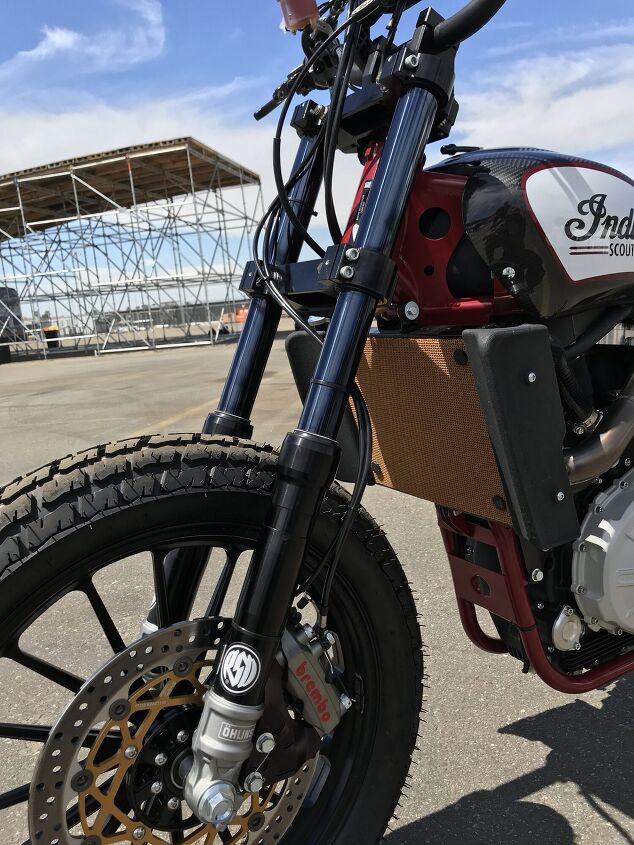
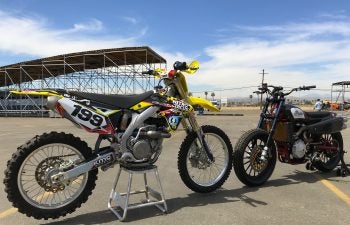
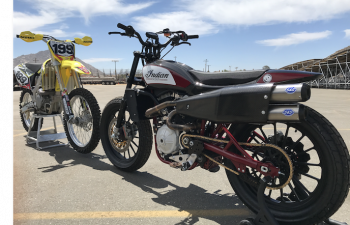
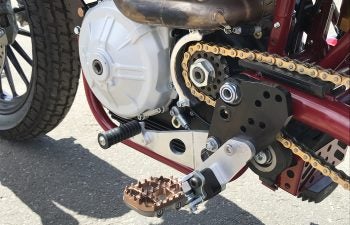
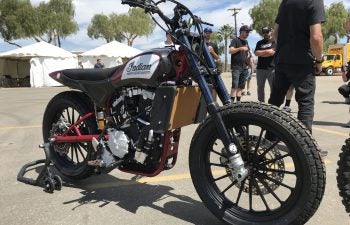
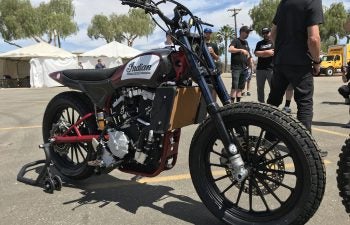
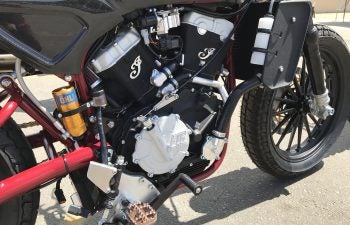
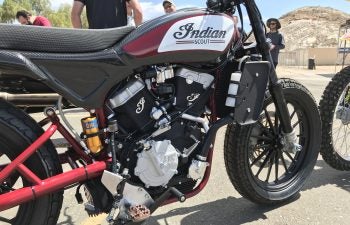
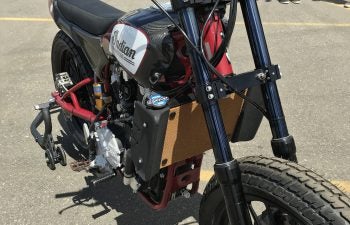
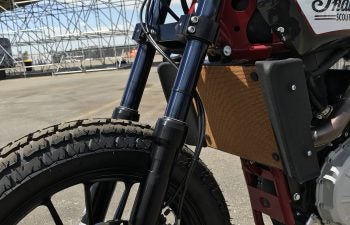
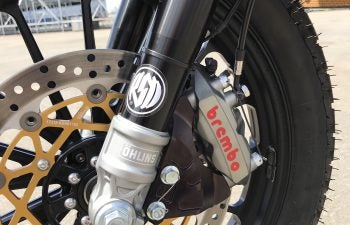
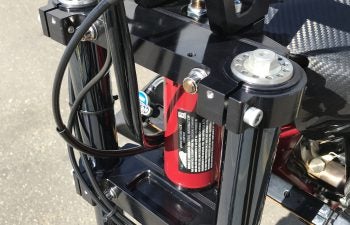
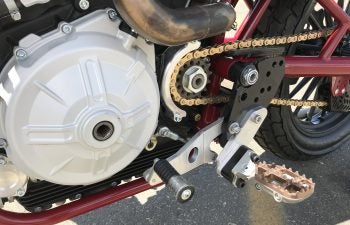
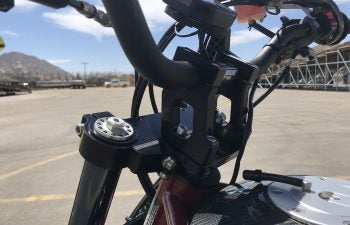
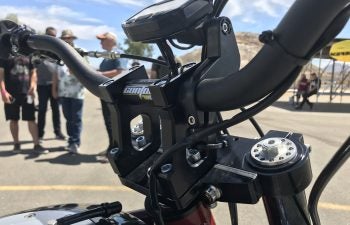
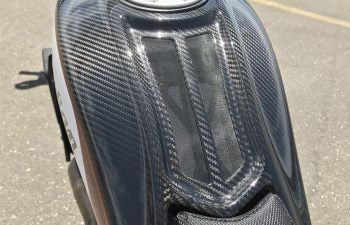
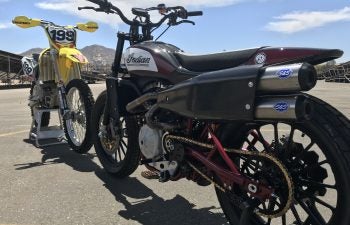
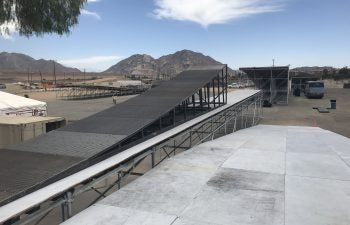
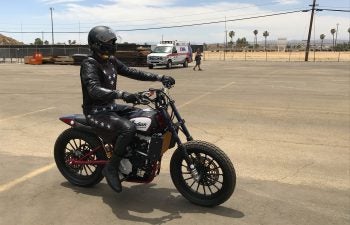
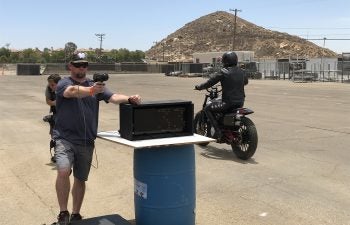
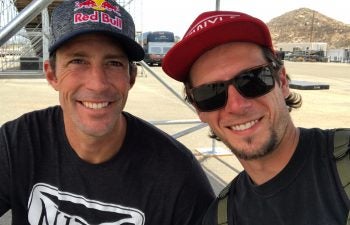
 Your Privacy Choices
Your Privacy Choices